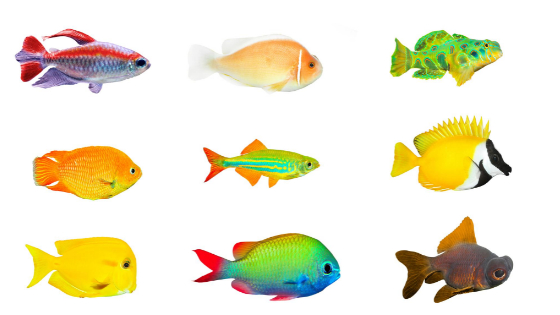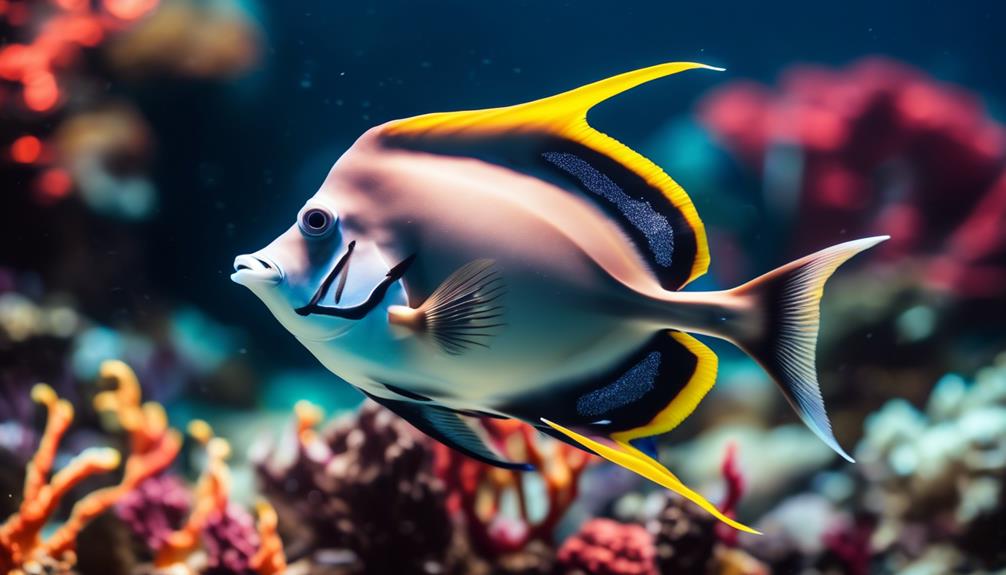
Are you ready to dive into the enchanting world of the underwater realm?
Imagine encountering a creature that possesses the intelligence of a cunning strategist and the allure of a mysterious enigma. Enter the batfish, a species that will leave you spellbound with its captivating nature.
From their resemblance to bats as juveniles to their elegant silver-grey appearance as adults, these fish are a true marvel to behold. But that’s just the beginning of their allure.
Brace yourself as we unravel the secrets behind their remarkable intelligence and explore the depths of their habitat. Prepare to embark on an unforgettable journey into the captivating world of batfish, where every revelation is more astounding than the last.
Key Takeaways
- Batfish belong to the family of marine fish and are found in saltwater environments.
- They can grow to be large in size and require a very large aquarium for proper care.
- Batfish are non-aggressive in nature and can coexist with certain tank mates.
- They are known to be extremely intelligent and exhibit defensive behaviors when threatened.
Batfish Information
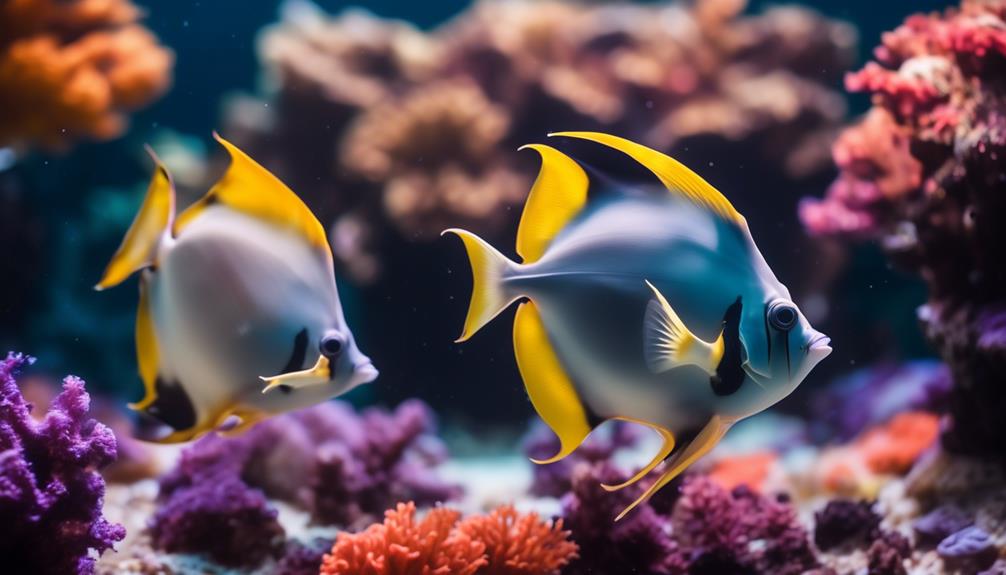
Batfish belong to the family of marine fish and are commonly found in saltwater environments. They can grow to be quite large in size. Despite their intimidating appearance, batfish are actually non-aggressive in nature. If you’re considering keeping them in an aquarium, you’ll need a very large tank, preferably 200 gallons or more.
They prefer to swim in the middle region of the tank and can coexist with other species such as boxfish, clownfish, damsels, gobies, hawkfish, and squirrelfish. However, they do require weekly care and attention.
Juvenile batfish have a distinct bat-like side profile with a tall, laterally compressed body and long anal and dorsal fins. As they mature, their body shape becomes more elongated and square-shaped. Adult batfish have a less striking coloration, typically appearing silvery grey.
Batfish Appearance
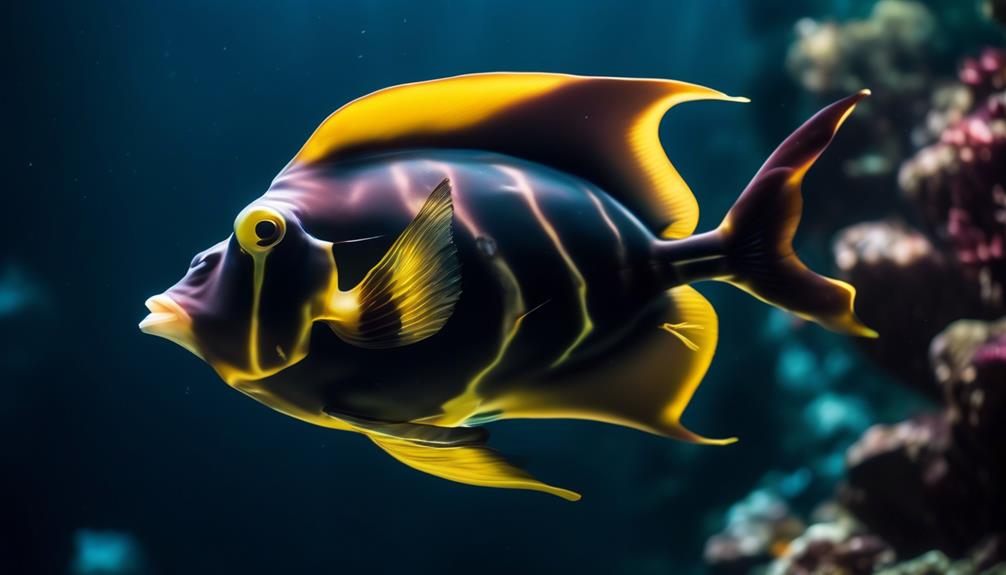
Now let’s take a closer look at the physical characteristics of these captivating marine creatures, starting with their unique appearance.
Juvenile batfish have a distinct bat-like side profile, characterized by a tall, laterally compressed body and long anal and dorsal fins. As they mature, their body shape becomes more elongated and square-shaped.
Adult batfish have a less striking coloration, typically appearing silvery grey. Their appearance may not be as eye-catching as the juveniles, but they still possess a certain elegance. The combination of their bat-like profile and silvery grey coloration makes them quite fascinating to observe.
These physical traits contribute to their overall charm and make them stand out among other species in the marine world.
Batfish Intelligence
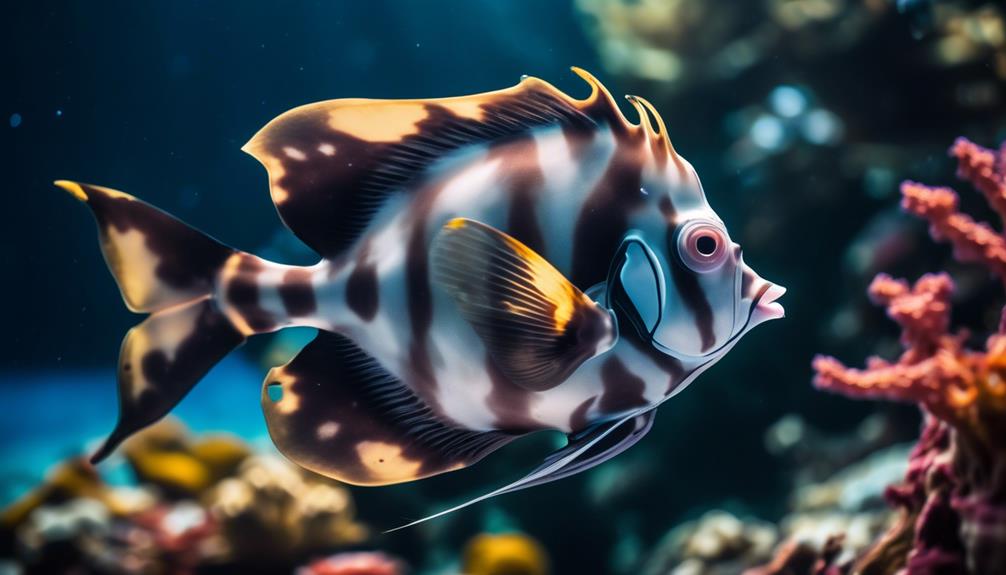
As you delve into the captivating world of batfish, you’ll soon discover their remarkable intelligence. Batfish are known to be extremely intelligent creatures, constantly fascinating researchers and enthusiasts alike.
Their ability to adapt and problem-solve sets them apart from other marine fish species. Scientists have observed batfish displaying complex behaviors, such as using tools to open shells and extract prey.
Their intelligence also extends to their communication skills, as they’ve been observed using a variety of signals and gestures to communicate with each other. This level of intelligence allows batfish to navigate their environment effectively and strategize when it comes to hunting and avoiding predators.
It’s truly fascinating to witness the cognitive abilities of these captivating creatures.
Batfish Habitat
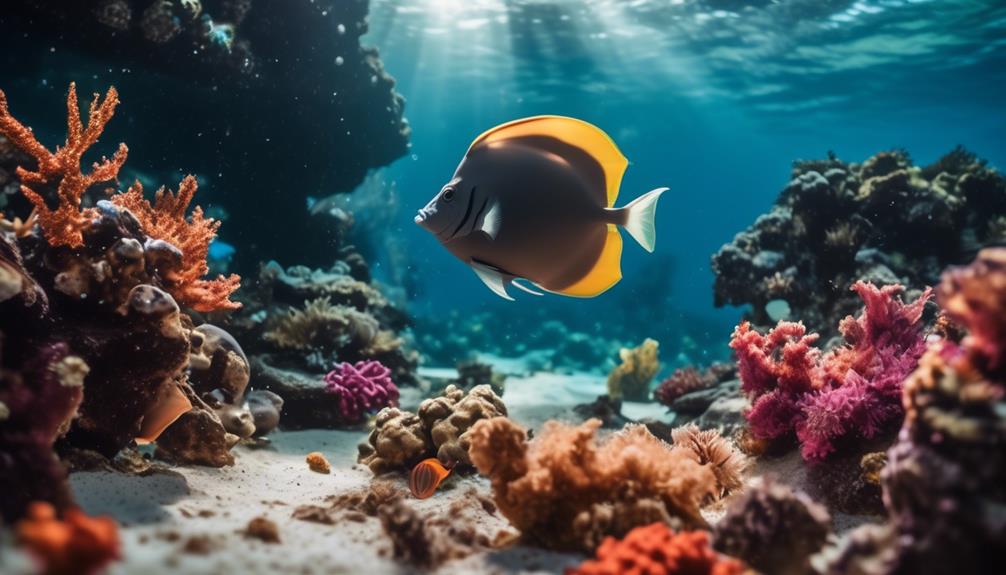
After exploring the intelligence of batfish and their fascinating behaviors, it’s time to shift our focus to their preferred habitat.
Batfish are found in saltwater environments, which means they require a suitable aquarium that can replicate their natural habitat. These fish need a very large tank, preferably 200 gallons or more, to ensure they’ve ample space to swim and explore.
When it comes to swimming region, batfish prefer the middle region of the tank. As for tank mates, they can coexist with boxfish, clownfish, damsels, gobies, hawkfish, and squirrelfish.
However, it’s important to provide them with weekly care and attention, as batfish require a certain level of difficulty in care. By creating the right habitat for batfish, you can ensure they thrive and showcase their captivating nature.
Batfish Description

To understand the unique characteristics of batfish, one must delve into their intriguing description.
Juvenile batfish have a distinct bat-like side profile with a tall, laterally compressed body and long anal and dorsal fins. As they mature, their body shape becomes more elongated and square-shaped.
Adult batfish have a less striking coloration, typically appearing silvery grey. In addition to their appearance, batfish are known to be extremely intelligent, making them a fascinating species of marine fish.
When feeling threatened, batfish exhibit certain defensive behaviors. Overall, the batfish’s physical features, coloration, intelligence, and defensive behavior contribute to their allure and captivation.
Batfish Defensive Behavior
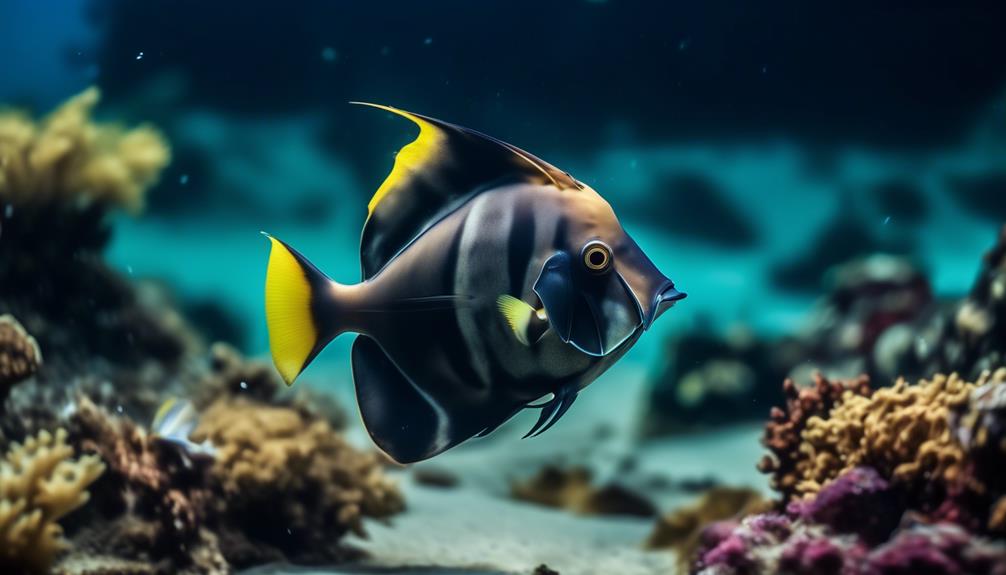
When threatened, batfish display distinct defensive behaviors that highlight their intelligence and adaptability.
One of the most fascinating defensive behaviors of batfish is their ability to change their coloration to blend in with their surroundings. This adaptive camouflage allows them to hide from predators and avoid detection.
Additionally, batfish have been observed using their pectoral fins to walk along the ocean floor, resembling a bat walking with its wings. This behavior not only helps them navigate through complex environments but also serves as a means of defense by allowing them to escape quickly when threatened.
Furthermore, batfish have been known to inflate their bodies, making themselves appear larger and more intimidating to potential predators.
These defensive behaviors demonstrate the remarkable intelligence and resourcefulness of batfish in protecting themselves from harm.
Batfish Care Requirements
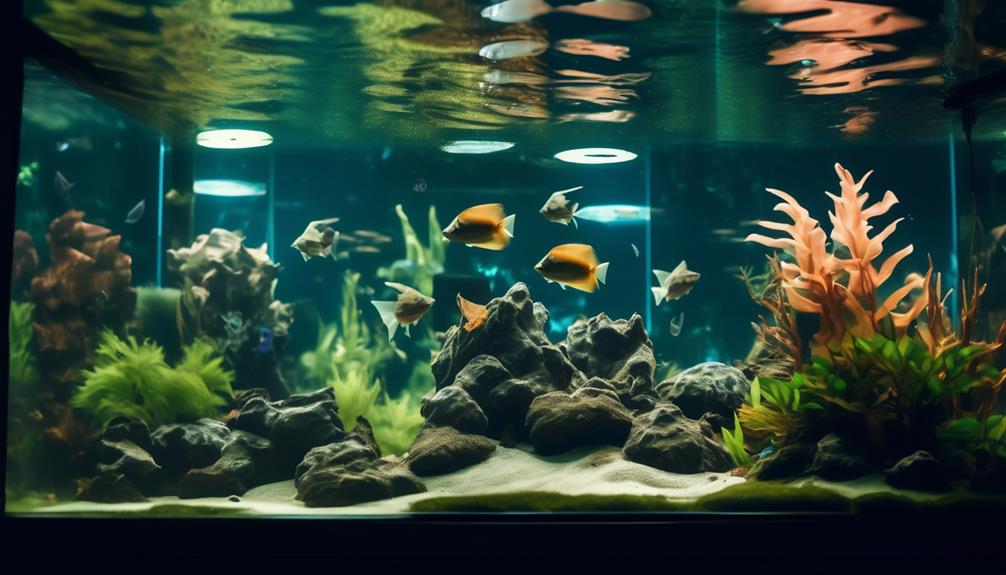
Caring for batfish involves providing them with a suitable environment and regular attention. To ensure the well-being of these fascinating creatures, here are some important care requirements to keep in mind:
- Tank Size: Batfish require a very large aquarium, preferably 200 gallons or more, to accommodate their size and swimming habits.
- Water Quality: Maintaining excellent water quality is crucial for batfish. Regular water testing and filtration are necessary to keep their environment clean and healthy.
- Diet: Batfish are omnivorous and should be fed a varied diet consisting of high-quality pellets, frozen or live foods, and fresh vegetables.
- Tank Mates: They can coexist with compatible species such as boxfish, clownfish, damsels, gobies, hawkfish, and squirrelfish.
- Attention: Batfish require weekly care and attention to monitor their health, behavior, and overall well-being.
Frequently Asked Questions
What Are the Specific Care Requirements for Keeping Batfish in an Aquarium?
To keep batfish in an aquarium, you need a very large tank (200 gallons or more). They prefer swimming in the middle region of the tank and can coexist with boxfish, clownfish, damsels, gobies, hawkfish, and squirrelfish. Weekly care and attention are required.
How Do Batfish Exhibit Their Intelligence in Captivity?
Batfish exhibit their intelligence in captivity by displaying problem-solving skills, learning tricks, and recognizing their owners. They can also communicate with other fish and show curiosity towards their environment, making them fascinating and captivating to observe.
Are There Any Specific Water Parameters That Batfish Require in Their Aquarium?
You’ll want to ensure specific water parameters for your batfish’s aquarium. They thrive in saltwater environments and require a large tank (200 gallons or more). Keep an eye on temperature, pH levels, and salinity to maintain their well-being.
Can Batfish Be Kept With Other Types of Marine Fish Apart From the Ones Mentioned as Suitable Tank Mates?
Yes, batfish can be kept with other types of marine fish. They can coexist with a variety of species such as angelfish, tangs, wrasses, and triggers, as long as the aquarium is large enough to accommodate them all.
Do Batfish Have Any Specific Dietary Needs or Feeding Habits?
Batfish have specific dietary needs and feeding habits. They require a varied diet consisting of high-quality pellets, frozen foods, and live foods. Feed them small portions multiple times a day to ensure they get enough nutrition.
What Makes Batfish Such a Captivating Species?
The majestic hatchetfish is one of the aquatic marvels that make the batfish such a captivating species. With its unique appearance and mesmerizing movements, the batfish draws the attention of underwater enthusiasts and scientists alike. Its mysterious behavior and graceful presence continue to intrigue and fascinate marine enthusiasts worldwide.
Conclusion
In conclusion, the batfish is a truly captivating species that never fails to amaze with its unique appearance and remarkable intelligence. Whether you’re a marine enthusiast or simply appreciate the wonders of nature, the batfish is sure to capture your imagination.
With its distinct bat-like appearance as juveniles and sleek grey coloration as adults, this species stands out among its aquatic counterparts.
From its intriguing behaviors to its defensive mechanisms, the batfish is a testament to the incredible diversity of the underwater world.




